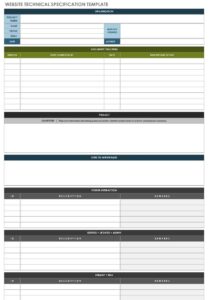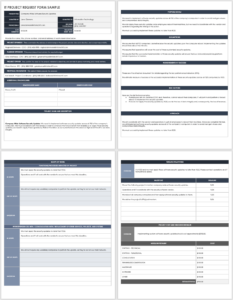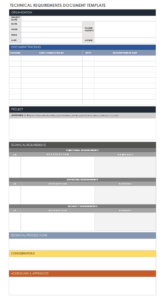Developing a clear and comprehensive business functional requirements template is crucial for any organization seeking to define and document the specific capabilities and functionalities of their software or system. A well-crafted template serves as a guiding framework, ensuring that all essential requirements are captured, facilitating effective communication between stakeholders, and laying the foundation for successful software development and implementation.
To create a robust business functional requirements template, it’s important to approach the task systematically. Begin by clearly defining the scope of the project, outlining the intended users and their needs, as well as the overall objectives and goals of the software or system. This foundation will inform the subsequent steps in developing the template.
Purpose and Components of a Business Functional Requirements Template
The primary purpose of a business functional requirements template is to translate high-level business needs into specific and testable requirements. It provides a structured approach to capturing requirements, ensuring completeness and consistency throughout the development process. A comprehensive template typically includes the following core components:
- Requirement Identifier: A unique identifier assigned to each requirement for easy referencing and tracking.
- Requirement Statement: A clear and concise description of the specific functionality or capability required.
- Rationale: A brief explanation or justification for the requirement, providing context and understanding.
- Acceptance Criteria: Specific conditions or metrics that must be met to demonstrate that the requirement has been successfully implemented.
- Priority: A rating indicating the relative importance or urgency of the requirement.
- Dependencies: Listing any other requirements that must be fulfilled before the current requirement can be implemented.
- Traceability: Linking the requirement to its source in the business requirements document, ensuring traceability throughout the development lifecycle.
Benefits of Using a Business Functional Requirements Template
Leveraging a business functional requirements template offers several significant benefits, including:
- Clear and Consistent Documentation: The template enforces a structured approach to documenting requirements, ensuring clarity, consistency, and completeness.
- Improved Communication: A standardized template facilitates effective communication between stakeholders, reducing the risk of misunderstandings and misinterpretations.
- Reduced Development Time and Cost: By capturing and documenting requirements upfront, unnecessary rework and costly changes during development can be minimized.
- Enhanced Software Quality: A well-defined set of requirements serves as a benchmark for testing and acceptance, contributing to the delivery of high-quality software that meets the intended business needs.
- Traceability and Accountability: The template establishes traceability from high-level business requirements to specific implementation details, ensuring accountability and facilitating change management.
Conclusion
A business functional requirements template serves as a powerful tool for organizations seeking to implement effective software solutions that align with their strategic business objectives. By providing a structured and comprehensive approach to capturing and documenting requirements, it enhances communication, streamlines development, and ensures the delivery of high-quality software that meets the intended needs of the organization.
Investing time and effort in developing a robust business functional requirements template is an essential foundation for successful software development projects. By embracing a systematic approach and utilizing a well-crafted template, organizations can significantly increase their chances of achieving optimal outcomes.



